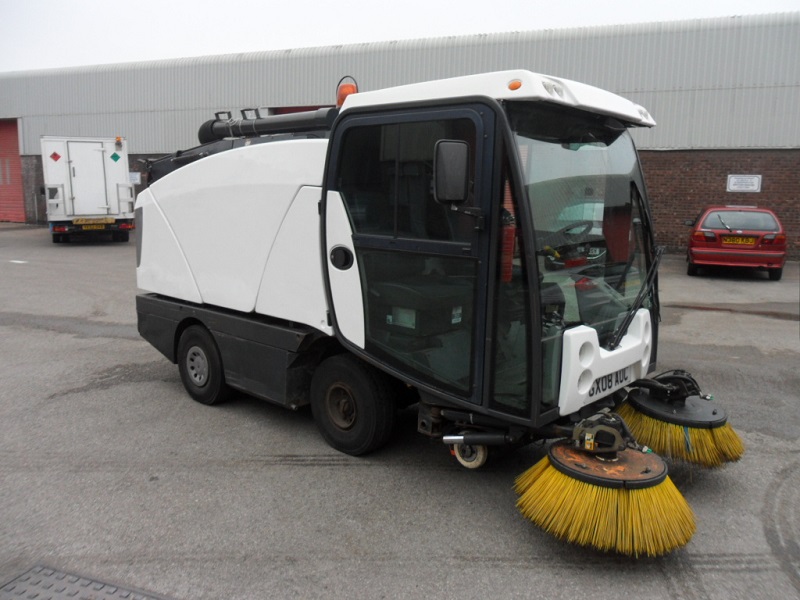Road sweeper
Road sweepers are vehicles that are used to keep roads, pavements and other hard surfaces clean and free from debris. Road sweepers either clean with brushes or with air.
Conventional road sweepers use jets underneath the vehicle body to spray water onto the road surface. This helps to loosen particles and reduce airborne dust. Brushes then scrub the dirt off the surface, while a cylindrical broom-like brush sweeps the debris onto a conveyor belt which leads to a storage container, or hopper, inside the vehicle. Alternatively, a vacuum mechanism may suck up the debris.
Typically, the brushes are capable of spinning at around 4,000 revolutions per minute (rpm).
Regenerative road sweepers use a hydraulic system that forces air into a swirling effect inside a contained sweeping head. A negative pressure on the suction side is then used to suck the debris into the hopper. The truck is fitted with filters that use centrifugal separation to clean the air of the debris, allowing the air to be reused.
These road sweepers are often noisier than conventional sweepers, as an extra engine is required to power the vacuum pump.
Many modern road sweepers are PM10 certified, which means they are capable of collecting and holding particulate matter as small as 10 μm (micrometres), which is often a leading cause of stormwater pollution.
[edit] Related articles on Designing Buildings Wiki
Featured articles and news
RTPI leader to become new CIOB Chief Executive Officer
Dr Victoria Hills MRTPI, FICE to take over after Caroline Gumble’s departure.
Social and affordable housing, a long term plan for delivery
The “Delivering a Decade of Renewal for Social and Affordable Housing” strategy sets out future path.
A change to adoptive architecture
Effects of global weather warming on architectural detailing, material choice and human interaction.
The proposed publicly owned and backed subsidiary of Homes England, to facilitate new homes.
How big is the problem and what can we do to mitigate the effects?
Overheating guidance and tools for building designers
A number of cool guides to help with the heat.
The UK's Modern Industrial Strategy: A 10 year plan
Previous consultation criticism, current key elements and general support with some persisting reservations.
Building Safety Regulator reforms
New roles, new staff and a new fast track service pave the way for a single construction regulator.
Architectural Technologist CPDs and Communications
CIAT CPD… and how you can do it!
Cooling centres and cool spaces
Managing extreme heat in cities by directing the public to places for heat stress relief and water sources.
Winter gardens: A brief history and warm variations
Extending the season with glass in different forms and terms.
Restoring Great Yarmouth's Winter Gardens
Transforming one of the least sustainable constructions imaginable.
Construction Skills Mission Board launch sector drive
Newly formed government and industry collaboration set strategy for recruiting an additional 100,000 construction workers a year.
New Architects Code comes into effect in September 2025
ARB Architects Code of Conduct and Practice available with ongoing consultation regarding guidance.
Welsh Skills Body (Medr) launches ambitious plan
The new skills body brings together funding and regulation of tertiary education and research for the devolved nation.
Paul Gandy FCIOB announced as next CIOB President
Former Tilbury Douglas CEO takes helm.
UK Infrastructure: A 10 Year Strategy. In brief with reactions
With the National Infrastructure and Service Transformation Authority (NISTA).























